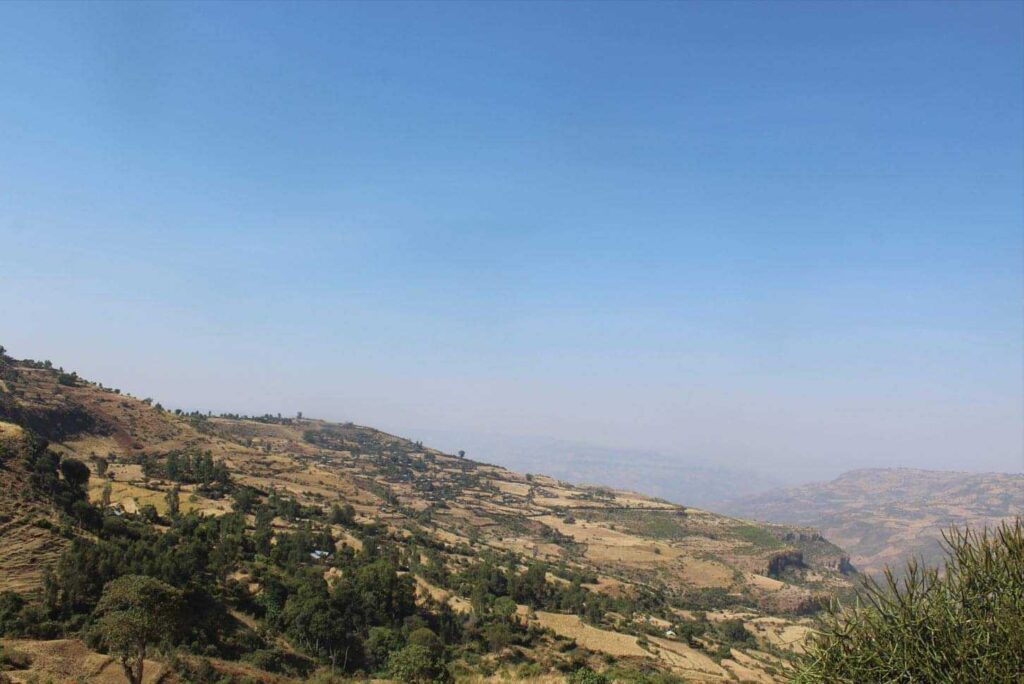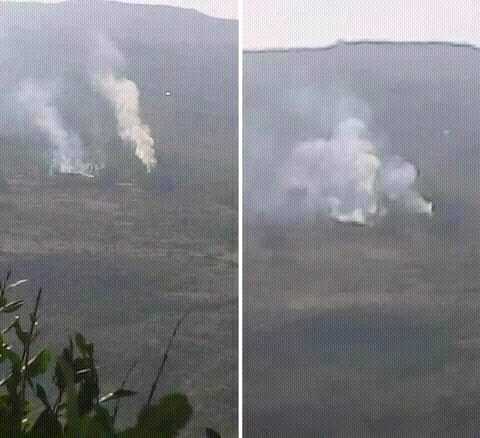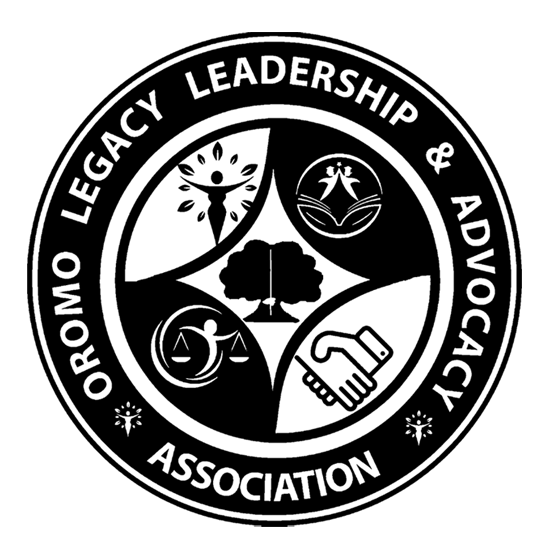Invisible Atrocities: The Unseen Destruction of the Oromoo People
Introduction to Ethiopia
The Federal Democratic Republic of Ethiopia is a state located at the core of the Horn of Africa. Home to the northern reaches of Africa’s Great Rift Valley and the source of the Blue Nile, Ethiopia is a geographical amalgam. The deserts and pastoral lands of its eastern and northern edges are a stark contrast to the high plateaus of its center and the deep wilderness of its west and south. The population of Ethiopia is—as with much of the African continent—diverse to say the least. The peoples of Oromia, Amhara, Tigray, Afar, Sidama, and Somali all comprise distinct ethnic groups with their own cultures and languages. And that neglects to delve into the even more diverse population of the Southern Nations, Nationalities, and People’s Region (SNNPR), in which several a multitude of ethnic and cultural identities are included.
The Ethiopian structure of government, at least since the overthrow of the Derg communist junta in 1991, has been a system of regional federalism based on ethnic population distribution. Hence the Tigrayans in Tigray, the Oromoos in Oromia, and each of the other sufficiently large ethnic groups in a regional unit with which it shares a name. Historically, political power—and therefore most other forms of power—has oscillated between the peoples of Amhara and Tigray or rested with some alliance thereof. The Oromoo, however, have a long history of second-class status since the political unification of Ethiopia by Menelik II in the late 19th century. Despite their minority status among the rest of the population, these powerful ethnic groups have imposed their visions upon the rest. It is in this status as disenfranchised citizens of Ethiopia that Oromoos have endured significant struggle. It is with all too intimate knowledge of those struggles that the nonprofit Oromoo Legacy Leadership & Advocacy Association (OLLAA) was started. The following stories of violence are untenable and, unfortunately, all too real.
The Case of Yaya Haro
Yaya Haro was once a small and peaceful village in the Oromia Region of Ethiopia. Nestled between two tributaries of a river in the highlands of Degam Woreda in the North Shewa Zone of Oromia, Yaya Haro was a place of agriculture for generations of Oromoo living there. This village, like so many in the Ethiopian Highlands, is secluded from much of the world around it by geography and by the demands of its primarily agricultural economy.
One of OLLAA’s own volunteers, Chala (Name changed to protect our volunteer’s identity), is from Yaya Haro and described the peaceful existence of its people before the current crisis in Ethiopia. Oromoos are a historically hospitable people, focused primarily on their families and communities; beyond hospitality, the Oromoo have an ancient history of peaceful, libertine governance under their democratic Gada System. The Oromoo villagers of Yaya Haro were once serene farmers, trying to produce food and income for their families, who seem to have been caught between two competing poles of power: the Oromoo Liberation Army (OLA) and the Ethiopian federal government.
Yaya Haro’s quiet seclusion has been abridged by the growing frequency of raids by government security forces in the past few years. But why would the government forces raid Yaya Haro? The answer is one that echoes through the halls of history, falsely justifying human rights abuses throughout the world for centuries: to silence dissenting voices through violence. The highlands around Yaya Haro are the heartland for OLA operations because insurgency is a tactic best implemented in rural and uneven terrain.
One need only look as far as the Menelik’s victory at Adwa in 1896 or at the successful insurgencies waged by Afghans against global superpowers to see that the terrain around Yaya Haro is highly conducive to asymmetrical warfare. The OLA knows this, and what’s more, the government in Addis Ababa knows this. Strategically and tactically, highland villages like Yaya Haro are valuable to the OLA and thereby dangerous to the government. With these crossed purposes bearing down, the people of Yaya Haro have felt the pressures and pains that come from their unfortunately fortuitous geography.
Yaya Haro is a community built against the backdrop of steep canyons on a promontory created by the rushing rivers that surround its raised position. This geography lends itself to the OLA forces hiding in the area, since the harder it is to find them the harder it is for them to be defeated. Yaya Haro, as the crucial point in this area, became the focus of government resentment toward the OLA fighters they could not locate.
Government forces applied classic anti-insurgency blunders in Yaya Haro, appearing to assume that if the rebels could not be defeated openly then they could be starved out by taking away the supplies and assistance assumed to come from the people of Yaya Haro. This is a classic counterinsurgency tactic for illiberal regimes, since the goal is to destroy dissent rather than safeguard the rights of the civilians caught in the crossfire. In the years since unrest resurfaced in Oromia—and other regions like Tigray—the government of Abiy Ahmed has been responding to deteriorating relationships with and between ethnic groups with policies and methods reminiscent of the oppressive unitary regimes in previous decades.

Violence & Displacement
The government forces first came to Yaya Haro in 2019 looking for members of the OLA group that operates out of that region. And while the killings did start that year, they were few and far between compared to the last few months of terror in Degam Woreda. In these past few months, the government forces have launched a special operation to destroy the OLA forces throughout the Oromia Region. In response to the recent killing of more than 200 ethnic Amhara on June 18 2022, the federal government launched further operations to defeat OLA forces that they–and some survivors–blame for the attack. On its face, this special operation is a judicious action to stamp out the terrorist organization that has been plaguing the central government for years; however, the extrajudicial harassment and violence against civilians brings concerns of human rights abuses to the fore.
This special operation has directly impacted not just the village of Yaya Haro, but the family of our own volunteers. Chala is a Yaya Haro native, now working and studying for a PhD in Agriculture in Europe. He grew up in his family’s village and went to school with many of the victims of recent violence there. At least a dozen of his former schoolmates and cousins now lie dead at the hands of soldiers sent to fight the OLA. Chala’s father was thrice hunted by soldiers under suspicions that he had helped the OLA rebels in the area. After his third successful attempt at remaining hidden, he was convinced that the benefits of staying in his home were overshadowed by the dangers.
Upon this conclusion, Chala’s father joined the long history of the Oromoo Diaspora which has been occurring continuously since the 1970s, if not earlier. His father relocated northwest to Fiche, which is the administrative city of North Shewa Zone. Already in the city were many of Chala’s relatives, including his 90-year-old grandmother who was forced to relocate when the soldiers became more aggressive. In the city, many of Chala’s family members are forced to rent exorbitantly expensive rooms in spite of their lost agricultural income. This displacement is not unique to a single Oromoo family either. Thousands of poor farmers and laborers have been forcibly removed from their homes by the aggressive tactics of the government forces.With the retreat of his father from their farmland, the bulk of Chala’s family who remained in Yaya Haro were left without a source of income.
On May 17-18, 2022, Yaya Haro endured the worst offense yet: an open attack on the entire village. Prior to this event, the aggression by government forces had been focused on a few suspects at a time. But in the face of continuing frustration and lack of success in hunting down the OLA members in the area, the soldiers turned their ire upon the people of Yaya Haro. While exact numbers of casualties are difficult to pin down due to government control of media coverage, Chala’s direct connection to this village allows us some of the details.
Several of his former schoolmates and friends were killed in the May attack, and his aunt’s house was burned down. Per his knowledge, more than half of the fifty or so buildings in town were burned along with the fields of the farmers in the village. It is this aspect of the atrocity that poses the largest scale hardship on the people already endured active violence; killing civilians and burning houses is a horror many people cannot even imagine living through, but after those horrible moments so many from Yaya Haro were left without food or a source of income. This dual problem of nutrition and economics has implications far beyond the once picturesque landscape of the North Shewa Zone.

Growing Dangers for Oromoos
Food scarcity and starvation are already on the rise in many of Ethiopia’s rural regions. Now, for the people of Yaya Haro, the scarcity will be exacerbated by the inability to purchase what little food that is accessible or grow their own. Without income from agricultural practices, Yaya Haro’s population—whether displaced or not—will find further struggle in feeding themselves and their families. The economic hardship and food insecurity will not be localized to these poor farmers either. The burning of their fields did not just rob them of income, it robbed potential buyers of food that was already scarce.
Yaya Haro is not the only place in Oromia to experience this total warfare, nor is Oromia the only place in Ethiopia to feel these pains. The northern Tigray Region is in open rebellion against the Abiy regime in Addis Ababa and has been the focus of significant military resources for the past two years. The crises of food security and human rights abuses by the government in Oromia diverge from the open civil war in Tigray in one significant way: Oromia is not at war with its central government, but it is suffering the backlash due to the government’s clashes with an armed minority within its bounds.
It is integral to call attention to the difference in those two situations. The rebellion in Tigray is spearheaded by the Tigrayan People’s Liberation Front (TPLF); this is the dominant political party in the region and is also the organization that exercised significant power in the country from the fall of the communist Derg government until the rise of Prime Minister Abiy in 2018. Tigrayan fighting forces are therefore well-trained and meaningfully equipped to take on the central government.
The OLA is likewise a storied organization that once challenged the military government of the Derg, but it does lack the legitimacy and support that is enjoyed by its northern counterpart. At its inception, the OLA was the armed wing of the Oromoo Liberation Front (OLF), which was and remains one of the leading Oromo political parties in Ethiopia. Once the Derg was defeated and Ethiopia started on its rough road toward more equitable governance, the OLA was officially disbanded—although the organization never truly ceased to exist. In May 2021, the Ethiopian government designated the OLA–alongside the TPLF–as a terrorist organization.
However, unlike the TPLF, while the OLA has made waves for the national government, it remains more insurgent than formal in its operations. As a result, there is no front line for this conflict in Oromia and civilians constantly find themselves caught between warring factions. Sadly, this often leads to non-combatant casualties well beyond those of combatants.
This aggressive treatment of the Oromoo is nothing new, tragically. The rise of the Derg military junta in 1974 was but a notable moment on the timeline of a prolonged ethnic discrimination against the Oromoo. This discrimination was often social and economic, with Afaan Oromoo being banned as a school language and Oromoos being denied licenses to open businesses; the discrimination also turned violent with regularity, dissent was met with closed fists not open arms. After the Derg, the TPLF took power and continued a policy of ethnic preferences. A notable death knell of TPLF hegemony came in 2017, in which armed forces from the Somali state—at the alleged encouragement of the central government—entered Oromia and began a violent campaign of displacement and destruction there. Soon after this, the current regime of Abiy Ahmed came to power and there was hope in the hearts of many Oromoos that their time in the sun had finally come. After all, the new Prime Minister was himself an Oromoo.
For a few years, these hopes lived on. But in 2019, and especially once the COVID-19 pandemic struck the nation, the new regime began to reflect the old more and more. By the end of his first year in office, Dr. Abiy Ahmed had yet to meaningfully shift government practice away from extrajudicial detention and torture. Across Ethiopia, government forces have been jailing people based only on shared ethnicity or language with local rebel groups, especially the Oromoo and Tigrayan civilian populations. Dr. Abiy was a career politician who had served as a supporter of the TPLF regimes that had once ruled in Ethiopia. His government’s slide into unitarist aggression has broken the hearts of many once-hopeful Oromoos. Chala holds that the Abiy government’s unitarist inclinations conflict directly with the federalist ideals of many Oromoos. With the current ethnic federalism system being eroded daily, many Oromoos fear losing their identity.
Hidden from the World
Many people have found themselves asking, “Why have I never heard about any of this?” The answer, unsurprisingly, is because the government in Addis Ababa does not want these events, and so many like them, to be covered by foreign press. Beyond foreign press, many Ethiopian journalists have been jailed along with opposition political figures; even the Ethiopian Human Rights Commission—which has a widely known spotty record of human rights advocacy—has denounced these anti-media practices by policy forces at various levels of government. The Ethiopian government controls access to phone lines and the internet through its nationalized telecom industry; furthermore, the visas and clearances of foreign journalists in Ethiopia were revoked in response to unwanted coverage of the civil war in Tigray. This is why it has become so difficult to find these stories of terror and extrajudicial actions.
The global news media have been unable to meaningfully address the human rights abuses and acts of blatant aggression in Ethiopia and have since shifted their attentions to the current war in Ukraine and the acts of domestic terror in the United States. In short, Ethiopia is not near the top of their priority list. In the absence of prying eyes, the central government has begun a campaign against its own citizens who protest or express dissatisfaction. Oromoo political and cultural leaders have been jailed without crimes and executed without trial.
The notable case of the extrajudicial killing of Oromoo rights activist and singer Hachalu Hundessa sparked enough unrest to warrant an international news story, but that was nearly two years ago. In Oromia today, prison is not just a threat used against those who speak out against the government. Thousands of Oromoos live in constant fear that they will be arrested or simply attacked by government forces for unsubstantiated claims of involvement with the OLA.
Those arrested for purported connections to the OLA are typically held without formal sentencing; the prisoners simply sit in their confinement until the government decides otherwise. One way that advance release from this purgatory has been achieved is through yet another extrajudicial process: bribery. The guards and government officials will solicit bribes from prisoners’ families, demanding large sums of money for the release of their loved ones. In the already impoverished, now half burned, Oromia Region these bribes can ruin the economic standing of a family in perpetuity.
In response to these conditions, many Oromoo are displaced from their ancestral homes. Much of this displacement, like in the case of Chala’s family, is internal to Ethiopia. As internally displaced persons, these people receive less notice and therefore less aid from the outside world. However, Oromoo refugees do sometimes make their way to other countries in notable numbers.
This lack of visibility becomes a grave issue when trying to redress human rights abuses because—as with any political process—it requires public outrage and vocality to achieve the desired end. Without visibility, the Oromoo people have yet to garner sufficient support from global allies to rectify the flagrant abuses committed against them by successive regimes in Ethiopia. The current state of affairs for Oromia–and Ethiopia at large–is one of deterioration toward the gross human rights offenses of the 1990s in Kosovo and Rwanda. Without proper focus on the crimes against humanity committed in Oromia the situation continues in the direction of those former atrocities. All parties engaged in violence against civilians in Ethiopia must be held to account for the role they have played in these blatantly extrajudicial attacks against civilians of all origins. As long as the innocent are killed in pursuit of moral justice, such justice cannot exist.

